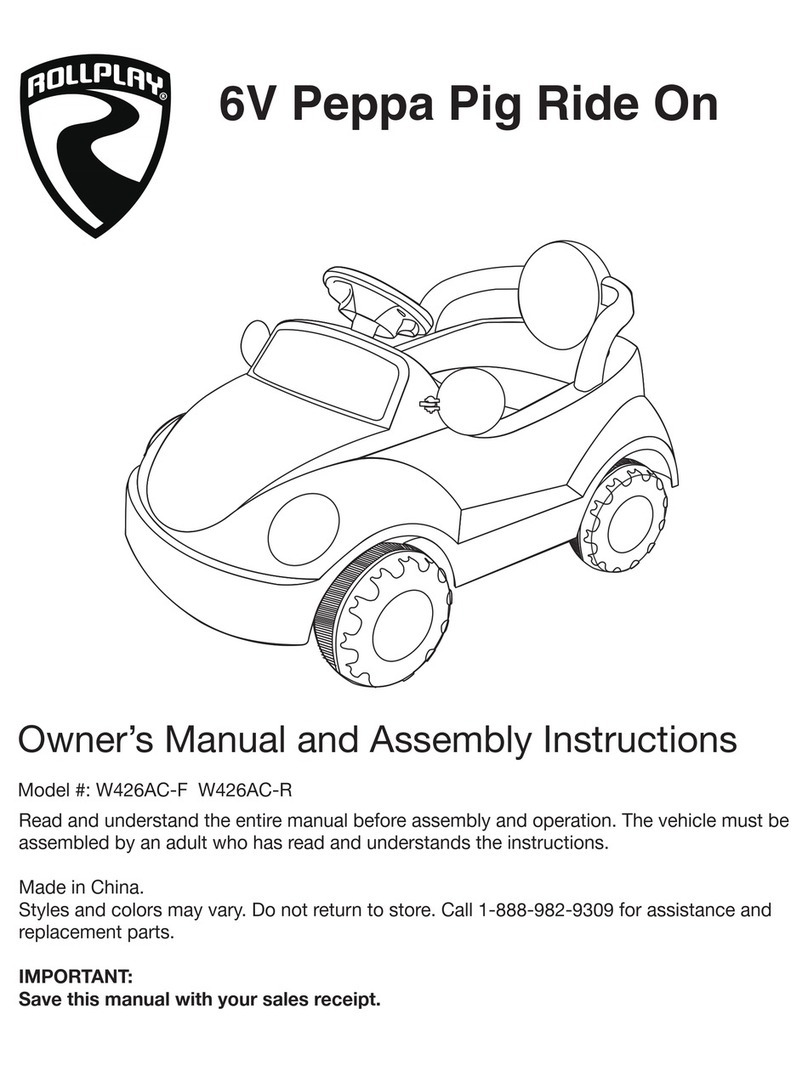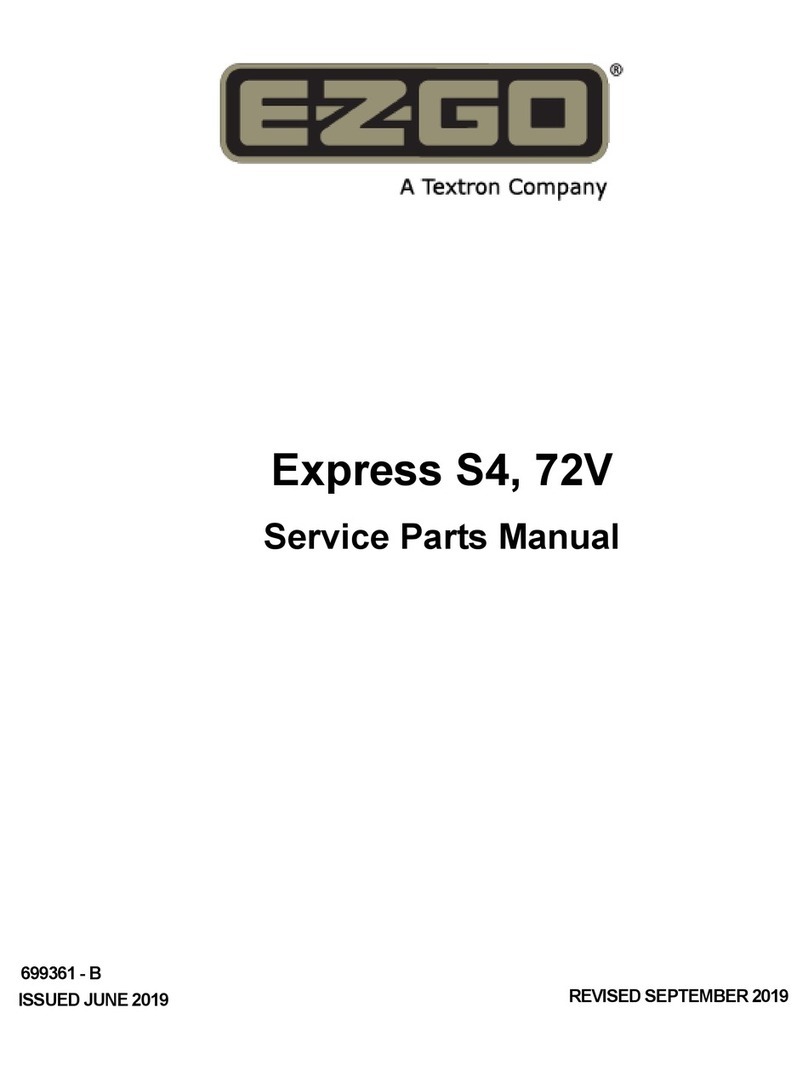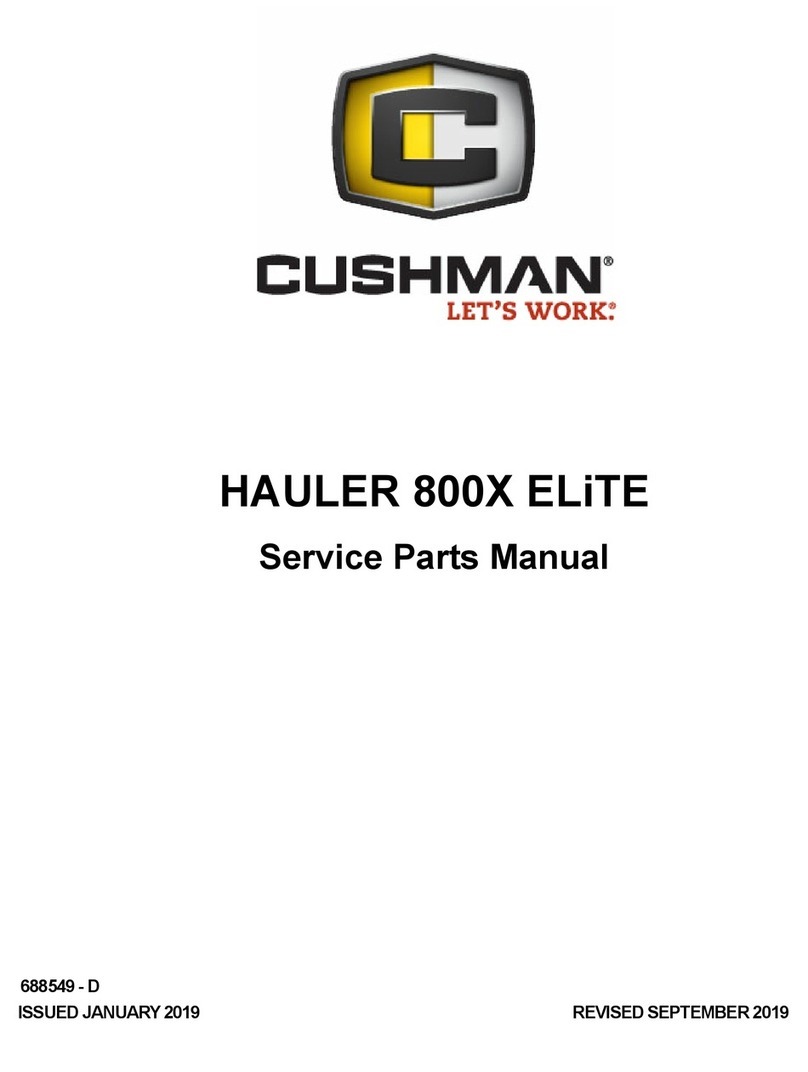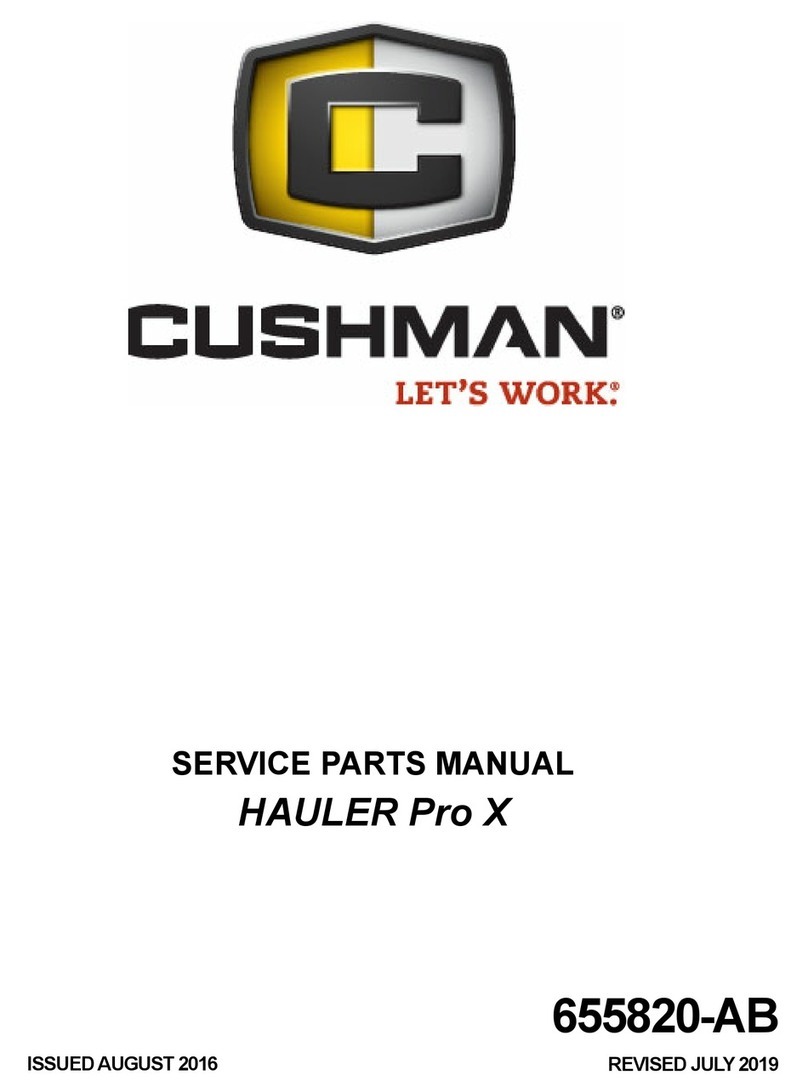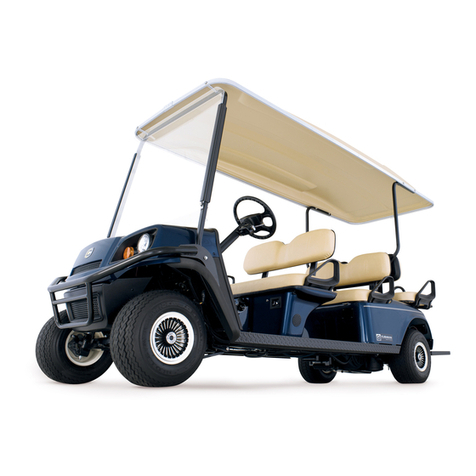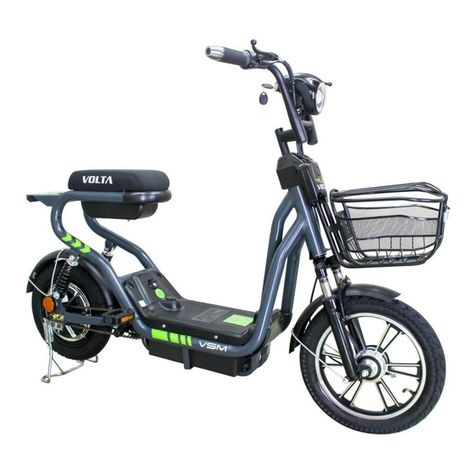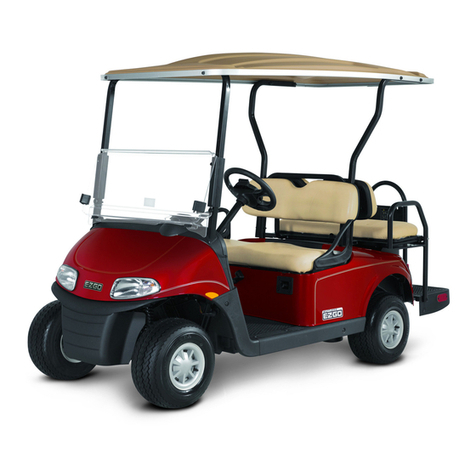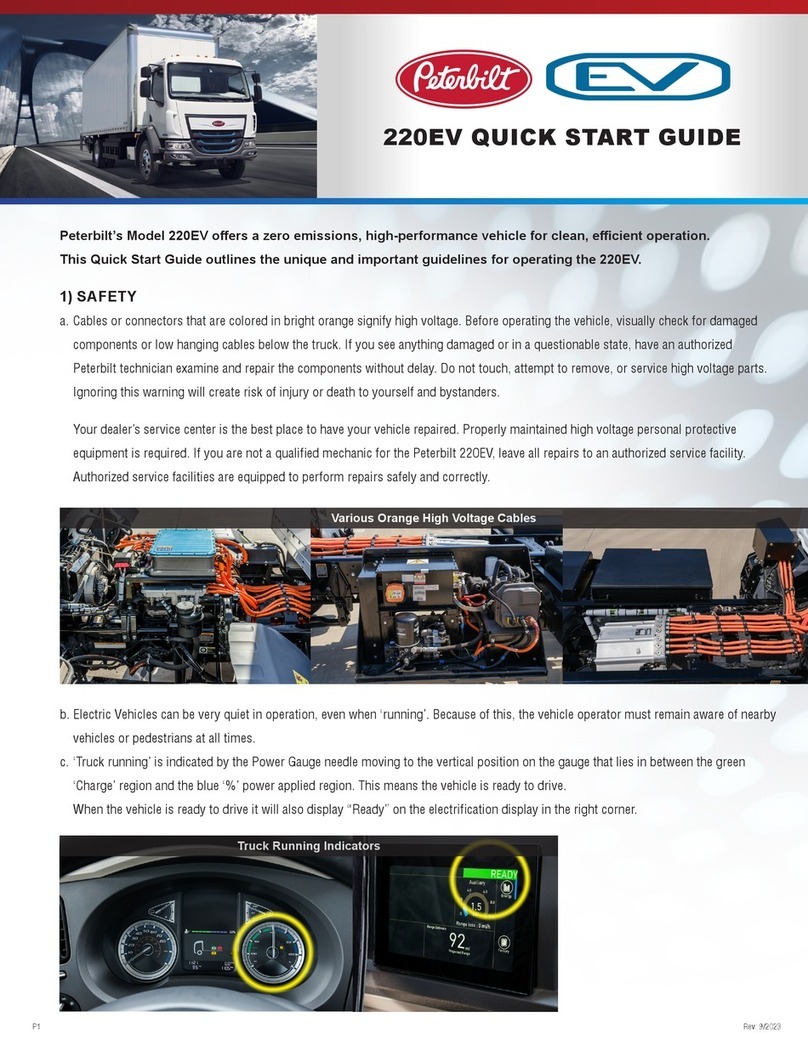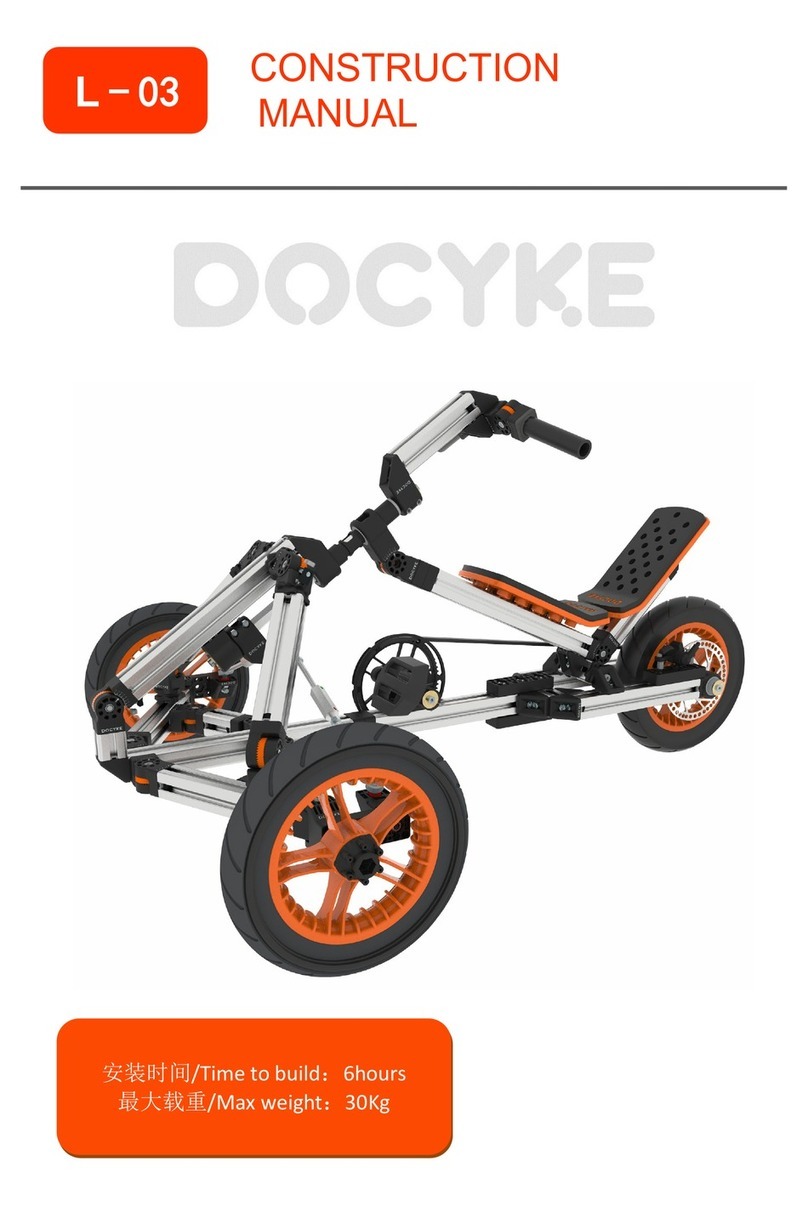
Page ii 647699 Service Parts Manual
NOTES
This vehicle has been designed and manufactured in the United States of America (USA).
The standards and specifications listed in the following text originate in the USA unless
otherwise indicated.
The use of non-Original Equipment Manufacturer (OEM) approved parts may void the
warranty.
Failure to properly maintain batteries may void the warranty. Refer to the battery manual for
instructions on the proper maintenance and care of the batteries.
BATTERY PROLONGED STORAGE
Batteries self-discharge over time. The rate of self-discharge varies depending on the
ambient temperature, the age and condition of the batteries.
Fully charged batteries will not freeze in winter temperatures unless the temperature falls
below -75°F (- 60°C).
For winter storage, the batteries must be clean, fully charged and disconnected from any
source of electrical drain.
The battery charger may be left connected to the vehicle to maintain a full charge on the
batteries, provided the charger is plugged into an active electrical source. If power to the
electrical source is disconnected or interrupted, the battery charger will continue to check
the charge on the battery pack. This will draw power from the battery pack and eventually
drain the batteries if power is not restored in a timely manner.
As with all electric vehicles, the batteries must be checked and recharged as required or at a
minimum of 30 day intervals.
Check and maintain the proper fluid level in all battery cells during the storage period.
Proper fluid level is required for maximum battery performance.
BATTERY DISPOSAL
Lead-acid batteries are recyclable. Return whole scrap batteries to distributor, manufacturer
or lead smelter for recycling. For neutralized spills, place residue in acid-resistant
containers with absorbent material such as sand. Dispose of in accordance with local, state
and federal regulations for acid and lead compounds. Contact local and/or state
environmental officials regarding disposal information.
